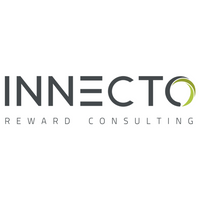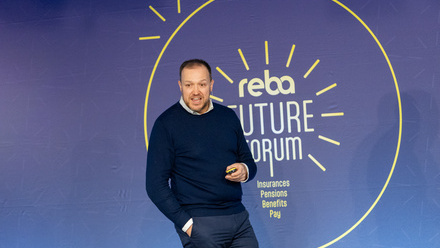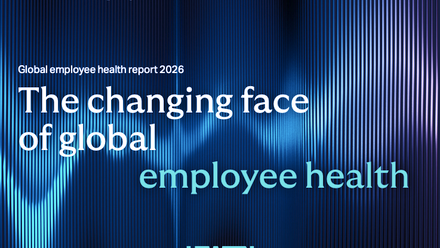How to ensure rewards support employees at different life stages
In the consumer world, companies know how important it is to understand customers’ diverse needs. Only by doing this can they tailor products and services based on demographic, behaviour and habit to maximise value.
In the modern workplace, employers can benefit from doing something similar: understanding workers enough to know what motivates them at various stages of employment.
The execution does not need to be sophisticated. Fundamentally, this is about an organisation ensuring that its reward and benefits strategy is not only fit-for-purpose and agile but is also valued by its employees.
Workers no longer stay with a single employer for life. These days, an employee might start as an apprentice or graduate, work and achieve enough to gain progression and promotion before moving towards retirement.
And when you overlay the same worker’s personal life and financial implications, things get more complicated. There is saving for a first car or family holidays; then affording ‘big’ life events such as buying a house or getting married; then having children means a different kind of commitment in terms of time and money, often through to retirement age.
So it is imperative that a benefits strategy is not only product-led but also combines a holistic approach to benefits and wellbeing.
Demographics by numbers
In data terms we need to break employees down into groups by gender, ethnicity, age, tenure, level and family status. Limiting this to six broad segments makes things manageable.
By combining this data with broader analysis of staff turnover, tenure, employee satisfaction and performance, we can start to understand why retention is more challenging for some age ranges, and we can highlight common misalignments between the expectation and reality of an employee value proposition (EVP).
Data analysis, while a big step forward, will only take you so far. To understand motivations and expectations beyond broad groupings and eliminate assumptions - particularly around benefits - you need to talk to employees.
Focus groups are great for gaining a deeper understanding of how to match affordability with value to employees and, by the end of the process, HR departments might look to produce a report similar to this:
Developing (up to 24)
- Starting to understand basic finances, living for the here and now
- Short-term planning and less employer loyalty
- Prioritises ability to buy holidays and take shorter breaks more often
- Choice and the ability to personalise the package is important
Forming (25 to 34)
- Want to put finances to more use
- Need sufficient understanding to maximise financial support, eg around ISAs, big ticket purchases (house, car) and saving for wedding
- Buying and selling holidays to provide flexibility of holidays over cash.
- Need to know what is available, and how they can do it.
- Responsibility and unique work experiences are important
- Will weigh up decisions for job mobility and will go for more opportunities to progress in salary and career
Flourishing (35 to 44)
- Finances are committed
- Every penny counts, so need to understand any support and advice available for mortgages, car finance, childcare and school fees.
- Work-life balance and professional interests are important
- Job security is important, as well as the opportunity to develop careers and earn more
Decisions are likely to be balanced and carefully considered
Establishing (45 to 54)
- More disposable cash with the ability to support children still living at home, with house deposits or attending higher education
- Health and long-term finances becoming more important. Likely to start increasing pension contributions and making a will or achieving strong financial planning is a focus
- Personal interests are important and careers are well established, so something must impact or change significantly to contemplate leaving or making a sideways move
Mentoring (55 to 59)
- This group has established job security and contentment if they feel their role has a purpose and is valued
- Company loyalty and a sense of duty and culture are key motivators
- With more disposable cash, health protection and retirement are key priorities. Allied to this, there is a risk they may leave early once pension draw-down kicks in
- Require more advanced financial support to ensure their finances and investments are working for them and any assumptions are not wide of the mark
- Likely to look for opportunities in flexible working or around additional holiday entitlement
Can and will make choices for health and happiness
Coaching (60+)
- Likely to make increased contributions to pension and additional purchases for health cover
- Often putting in place legal frameworks such as Power of Attorney
- Nearing retirement so unlikely to make an employment change unless forced to do so by a lack of flexibility around place of work or hours
- Will be contemplating their exact retirement age and date – an important life-changing phase
Don’t make assumptions
This kind of report should not be used literally. One 28-year-old worker could be married with children and a mortgage, while another could still be living with their parents and no dependents. Don’t assume that all employees over the age of 55 have more disposable cash, or take a greater interest in their benefits package than either of those 28-year-olds.
And life can take unexpected twists from redundancy, to grief, illness, trauma, divorce and addiction.
Effective communication
This approach should also enable companies to promote benefits with communications and messaging that resonates with workers. Whether you’re offering a simple EAP or a royal flush of pensions, salary sacrifice, flexi holidays and recognition schemes, poorly conceived messaging will fail to land well with all workers.
Universal accessibility to benefits is essential if the overall package is fair and equitable for every employee. Some of the best benefits tools can be accessed via smartphone apps giving 24/7 information in one place: a continuous programme of support, awareness and education for benefits, telling employees what is available, why it’s there, what it can do for them and how they can access it.
Supplied by REBA Associate Member, Innecto Reward Consulting
The UK’s largest independent pay and reward consultancy, transforming pay into performance.








